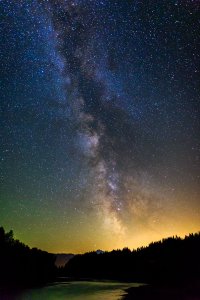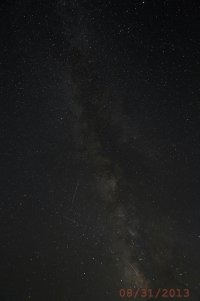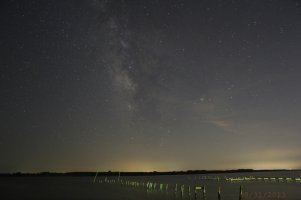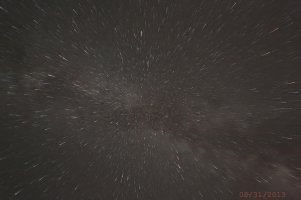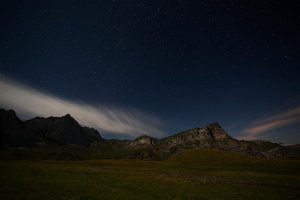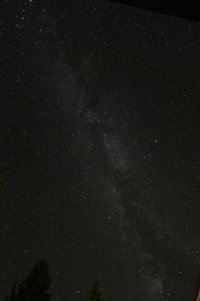I'd like to share a few.
This was the first opportunity for me to shot the Milky Way. Living in an urban environment do not allow for dark night sky. Was at the Pamlico River near the town of Aurora, NC., for a few days over Labor Day weekend.
These were shot with a 5D3 with a 24-70mm f/2.8 ver 1 at f/2.8 and ISO 3200.
The first was exposed for 15 seconds.
The second was exposed for 18 seconds. The light over the horizon on the right was from Aurora. Another in the middle was another small town. The foreground was the remains of hurricane Sandy damaged dock illuminated by house lights from behind the camera.
The third one was a goof. I set the lens at its wide end, fully extended, pointing vertically up. It started to slide back to the telephoto end, and a cuss and a curse before I could stop the lens drift and close the shutter. The effect was a bit like "warp speed". Interesting in a way. Exposure was for 35 seconds.

